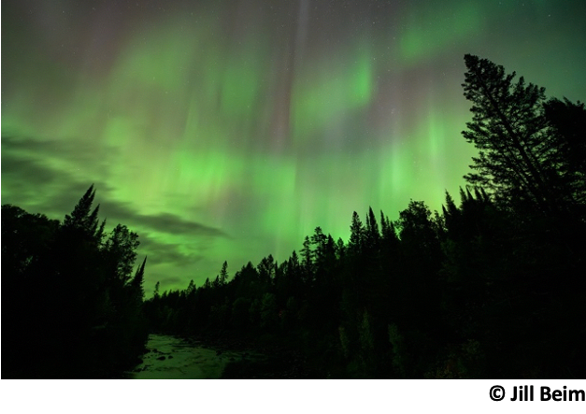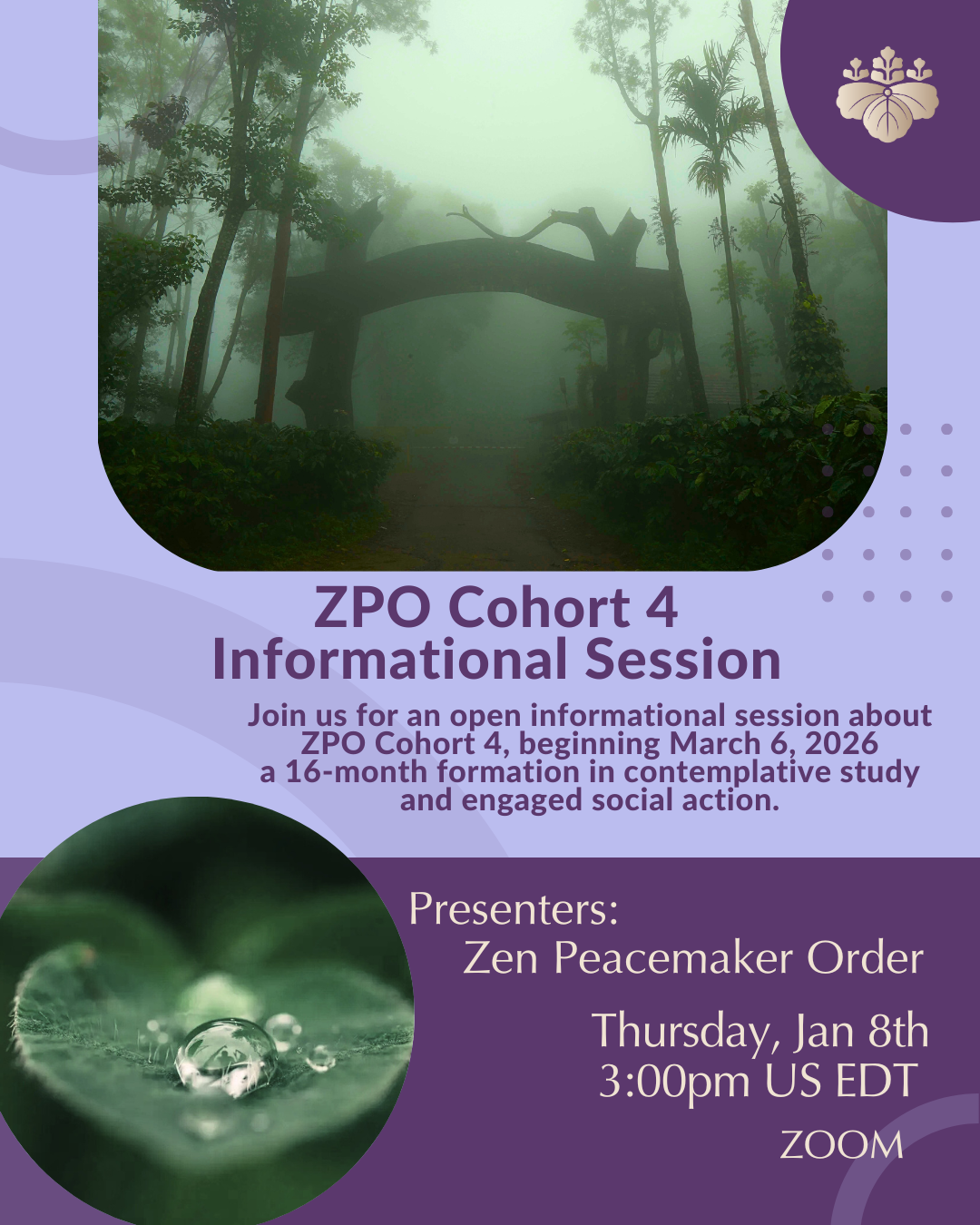March 2024
Many mornings, as something of a ritual affirming my connection to a Home Place, I log on and connect to a webcam feed from Big Sand Lake in northern Minnesota. Over a cup of coffee 600 miles away, I can look east from a webcam mounted on a pole at a resort—the same resort that serves as a backdrop in a photo found, among many, after my father’s death a few years ago. In the photo, he’s maybe eleven years old, maneuvering a wooden rowboat with his younger sister and brother on-board. Looking east on the webcam from the resort, I watch pontoon boats pass on summer days and full moons illuminating an ice- and snow-covered lake in the depths of winter. From the website, I can also look west from another webcam on the opposite shore, catching the last Trumpeter Swans on the last open water before freeze-up, and sunsets followed by the brighter planets setting in the western sky.
After vacationing in the area for decades, my grandparents bought a log cabin on Big Sand when I was five years old. That place is still a focus for family ritual now almost sixty years later. To this day, we take a moment to walk down to the shore before leaving late each fall and, as my grandmother and then my mother did religiously, say, out loud, “Bye, Big Sand.” I stoop at water’s edge on our first arrival in the spring, dip my hands in the cold, clear water, and rinse my face in acknowledging the privilege and gift of being there again—at times in my life seemingly undeserved.
Among the rituals my mom held, we stayed up late at the cabin, where summer twilight lingers well past ten o’clock, and she would lead us out onto the dock where we would gaze into the most brilliant star-filled skies one could imagine. The Milky Way stretched from horizon to horizon. I learned how to follow the two stars on the outer edge of the cup of the Big Dipper, out and out and out, to find the North Star, the end of the handle on the Little Dipper. We often lay out there until the wee hours, counting the falling stars, the flashes and tails of meteors breaking through our atmosphere.
The process of negotiating the walk, the few stairs and out onto the dock, was ritual in itself. We shut off the overhead front yard light and the brighter lights inside and moved slowly as we, as my parents phrased it, let our eyes get used to the dark. No flashlights allowed—for just a second of orienting ourselves by the beam of a flashlight blinded us to the stars for ten minutes or more. We let our eyes adjust as we walked out and just sat, or lay, in awe and wonder.
My mom was on to something. In The Darkness Manifesto: On light pollution, night ecology, and the ancient rhythms that sustain life, Swedish bat researcher and conservationist Johan Eklöf explains what is occurring in our eyes when we adjust to the night. During the light of day, the cones take over in our eyes to capture certain wavelengths that form the colors we see. As natural daylight fades, the rods assume the primary role in sorting out the light and energy entering our eyes. While rods are much more light-sensitive than the cones, picking up and transmitting the details found in a contrasting greyscale, they do not detect and transmit in color. This process of building night vision is dependent on the daily construction of blocks of rhodopsin, the light-sensitive protein we share with the earliest multi-cell life forms. Rhodopsin builds up slowly with the sun dropping lower in the sky through the day, or over thirty minutes or so after we step out of a bright cabin and walk out into the night. These rhodopsin blocks that bring night vision are torn down in an instant by a misdirected flashlight or oncoming car, needing another thirty minutes to rebuild—perhaps offering a metaphor for gathering and holding attention.
This process is one at play in other organisms’ adaptation to and dependence on the night. From fungi to flowering plants to moths and bats, many have evolved with triggers for feeding and reproduction dependent on darkness. Research shows that many birds navigate by the stars, migrating at night over what can be thousands of miles. The light pollution we see today from brightly lit parking lots, roadways, and city buildings confuses birds and disrupts flowering plants and moths and fireflies and other insects from fulfilling their ecosystem roles. And we, Eklöf asserts, as a people, become disconnected from the night, and with it the full scope of our place.
Some years ago, I turned an ambulance onto a straight-as-a-ruler highway north out of Minot, North Dakota. We’d dropped a patient off and transferred care at the regional hospital and were heading back to the Air Force Base, where I was employed as a civilian contract advanced life support paramedic. Past the edges of the small city, the darkness of open prairie became palpable. My cohort, an eighteen-year-old Air Force entry-level Airman Emergency Medical Technician fresh out of inner-city East Saint Louis, shifted in the passenger seat, looking up out the front windshield. A glow built along the northern horizon. We watched as it grew, and then flared up in blue-white ribbons into the sky.
“Northern lights,” I exclaimed.
“What are those?” he responded.
“You’ve never seen them?”
“I’ve never even heard of ‘em.”
“In a nutshell,” I explained, “those are the lights created when solar winds, from flare-ups from the sun, hit Earth’s atmosphere. We only see them in the Northern and Southern parts of the world.”
“Whoa,” he sighed. “I thought something happened back at the Base.”
Seeing we were headed back to Minot Air Force Base, home of a wing of B-52 bombers and another overseeing the nuclear missiles scattered in clusters of underground silos, affectionately known as the missile patch, across the Dakota prairie, my cohort’s concern was not by any means displaced.
I slowed and turned the rig onto a wide shoulder and shut the engine and lights off. We stepped out and were hit with a whiff of a recent skunk discharge, the first of the spring I’d noticed, and then explained, by request, what a skunk was to my urban companion. The northern lights pulsed a few more times, never reaching too far over the horizon, and faded. As darkness slipped in again, the moonless sky filled with stars. I took a slow, deep breath, taking it all in. My cohort gazed up as a meteor streaked directly over us, leaving a lingering trail behind it.
“This wasn’t in the Air Force recruitment video,” my cohort said, breaking the silence.
In the darkness of unimpaired night, Eklöf offers, “loneliness can be experienced more pointedly when (your sight is limited), and the need for closeness and community becomes stronger”—something that resonates with me having lived in places of long winter nights such as Cotton, Minnesota and Ester, Alaska. In darkness, we are more dependent on our hearing, and with it our capacity to listen. Gazing up into the night sky may be, Eklöf contends, the closest to a shared experience we might find. We are all,after all, under the same sky. Even in the heart of Kansas City or Chicago or East Saint Louis, one can look up and see the moon, maybe even a few stars.

In just looking up and taking in the night sky, and with it the awe and wonder and humility it tends to bring, perhaps we are getting a taste of, as Uchiyama framed it in his commentary to Dôgen’s Bendowa in The Whole-Hearted Way, “liv(ing) out the actual life that is the oneness of the self and of the world of our life experience”, when “the self that lives life experience and the world that is lived as life experience are not two, but one.” Looking into a clear night sky, dualities such as being from northern Minnesota and East Saint Louis seem rather insignificant.
If bringing ritual—in stopping, offering attention, and creating acknowledgement—is simply being mindfully and fully human in response to this life experience in and with the world, the night offers an invitation. In our bearing witness to our nights, perhaps we are simply all the more human.
We’ve had a stretch of unseasonably warm weather here in eastern Kansas. I take the opportunity to step outside onto the front drive at our home at dusk. Surrounded by encroaching suburban retail and brightly lit roadways, I don’t see nearly as many stars as I do from a dock in northern Minnesota. Living in an older neighborhood that has somehow missed the annexation development of the behemoth suburb of Overland Park, though, streetlights are absent around our home. With that, I can track the brighter constellation Orion in the winter sky. Venus and Jupiter, some of our closer planet neighbors, are often prominent after sunsets. I can sometimes make out the Big Dipper; and every once in a while, on nights free from any clouds that reflect urban light pollution, find the North Star.
Tonight, I step outside at dusk with the intention of watching for bats. I let my eyes adjust to the dark and watch over the street and yards broken by lofty still bare oaks. The sky darkens as minutes tick by. My attention is caught by the wild, erratic flight of a bat, dropping and twisting as it locates and catches insects by, in good part, following the echo of the bats’ vocalizations reverberating off the insects. Another, then a third, darting and veering over the yards and street.
“The first of the year,” I note in a whisper to myself, acknowledging the gift of one more spring.
(Photos with permission: © Jill Beim; Milky Way and Aurora Borealis over Temperance River, MN)


